Zapotén, Dominican Republic
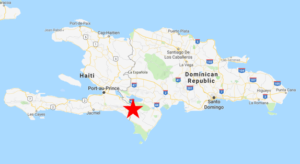
A morning at Zapotén is the highlight of many trips to the D.R. At the crest of the Sierra de Bahoruco, beside the Haitian border, Zapotén is the most reliable site for La Selle Thrush, White-winged Warbler, and Western Chat-Tanager. Other localized species that are seen regularly include White-fronted Quail-Dove, Bay-breasted Cuckoo, Hispaniolan Emerald, Hispaniolan Trogon, Narrow-billed Tody, Antillean Piculet, Hispaniolan Parrot, Hispaniolan Elaenia, Hispaniolan Kingbird, Golden Swallow, Rufous-throated Solitaire, Bicknell’s Thrush, Hispaniolan Crossbill, Antillean Siskin, Hispaniolan Euphonia, Green-tailed Warbler, and Hispaniolan Spindalis.
Orientation
Directions
Zapotén is deep inside Sierra de Bahoruco National Park and it is not easy to reach. Road conditions vary and can be a limiting factor. At the best of times, a high-clearance, four-wheel-drive vehicle is necessary, and the last 23 km up the mountain are likely to take at least an hour. At other times, particularly after strong storms, the road may be impassable for all vehicles, as certain sections are prone to wash-outs.
The road into the park begins at Puerto Escondido, a small dusty town about an hour’s drive (65 km) from Barahona or four hours (250 km) from Santo Domingo.
From Barahona. Follow Route 44 northwest into the farmland for about 1 km, then turn west on Route 46 (signposted for Cabral) and drive approximately 50 km into Duvergé. Upon entering the town, you will see a gas station on your left. At the fifth intersection after the gas station, turn left on Avenida Nuestra Señora del Carmen, which is the road to Puerto Escondido and Sierra de Bahoruco National Park. Soon after leaving Duvergé, the pavement ends and the dusty gravel road winds up through arid foothills, arriving at the village of Puerto Escondido after 11 km.
As you enter Puerto Escondido, the Sierra de Bahoruco National Park main office is the second building on the right. If the office is open when you arrive, it is a good idea to stop and pay the nominal fee to purchase a ticket to enter the park.
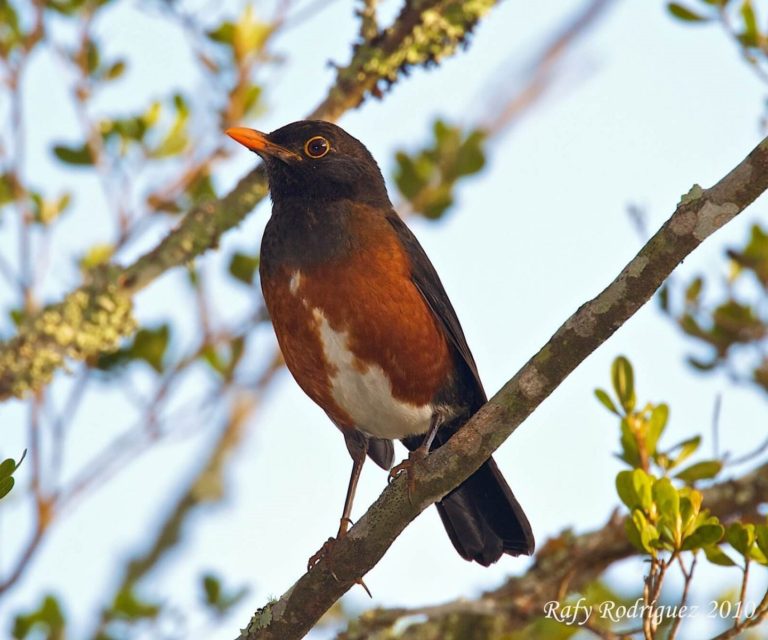
Zapotén has long been known for the La Selle Thrush, which feeds along the road at dawn and dusk. © Rafy Rodríguez
In Puerto Escondido, follow the main road west by taking a right at the T-junction. This road is well-maintained until La Placa (11 km), where a gate and guards control entry into the park. To pass through the gate legally requires a ticket purchased at the park office, but if the timing of your arrival prevented you from buying a ticket, the guards have a history of showing compassion and letting people through with a promise to buy a ticket later. (But without a ticket in hand, there is no guarantee of entry.)
About 2 km past La Placa, the road swiftly deteriorates, becoming a rough track that requires high clearance in places, then ascending steeply through miles of loose rocks (resembling a large scree chute) that may be impassable without four-wheel drive, and eventually becoming a rough track once again until cresting a ridge at a small military outpost 9 km past La Placa.
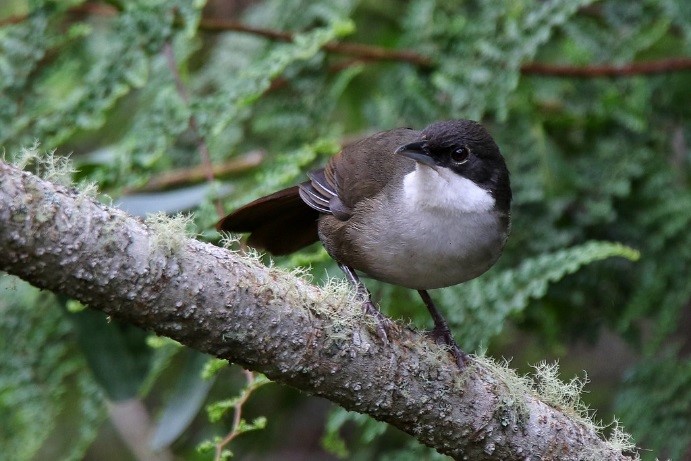
Zapotén is the best place to look for the Western Chat-Tanager. © Kenny Diaz
The outpost, El Aguacate (named for a large avocado tree), is a stone’s throw from the Haitian border, and offers a panoramic view of Haiti’s deforested hills. Haitians regularly cross the border here on foot with no effort made to block their entry.
From El Aguacate, the track continues upward with intermittent rough patches for 6 km to the ranger station known as Zapotén. At this point, the track becomes gentler as it climbs into the pine forest. With the right vehicle and reasonable conditions, it is possible to continue driving this track all the way down to Pedernales, although the track reportedly becomes extremely rough a few km past the crest.
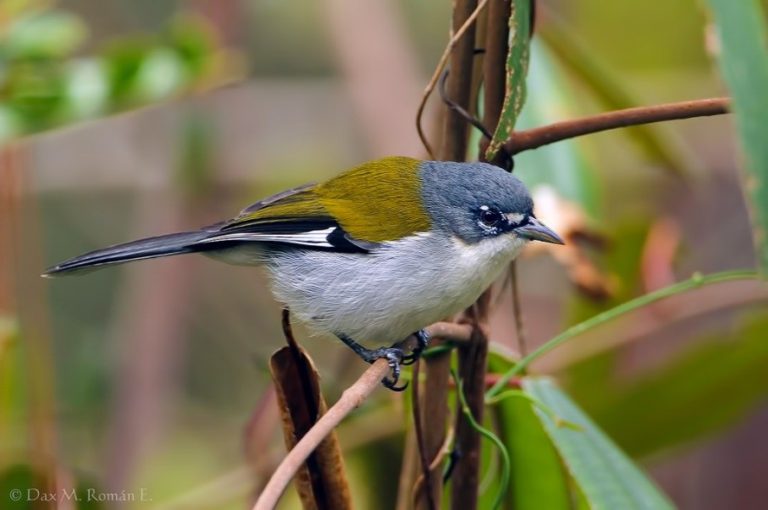
Zapotén is home to the subtly beautiful White-winged Warbler. © Dax M. Román E.
Birdfinding
Zapotén is the best or most accessible D.R. site for three species: La Selle Thrush, White-winged Warbler, and Western Chat-Tanager. All three can be found consistently along the 1,500 m stretch of road beyond the Zapotén ranger station, especially early in morning, so most visitors plan to arrive before dawn—which usually means departing Puerto Escondido around 4:00 a.m. Because on-time arrival at Zapotén can be crucial to the success of this excursion, it is best not to stop for night birds on the way up unless extra time has been included in the schedule.
La Selle Thrush can be seen most days between first light and sun-up, hopping around and foraging openly on the road above Zapotén, particularly in the stretch that begins about 800 m past the ranger station, conveniently marked by a sign with a hand-painted illustration of the species. The probability of seeing La Selle Thrush becomes much lower in broad daylight. As you watch for hopping thrushes in the twilight, be aware that Eastern Red-legged is at least as common as La Selle, and Bicknell’s is also present from October until April.
In case it is already getting light before you reach the Zapotén ranger station, La Selle Thrush can also be found along the road about 500 m below it, in a valley where the road bends strongly to the left. Under these circumstances, you should walk this stretch slowly and quietly, not to miss the thrush if one emerges. This stretch is also especially good for White-fronted Quail-Dove, under the same conditions.
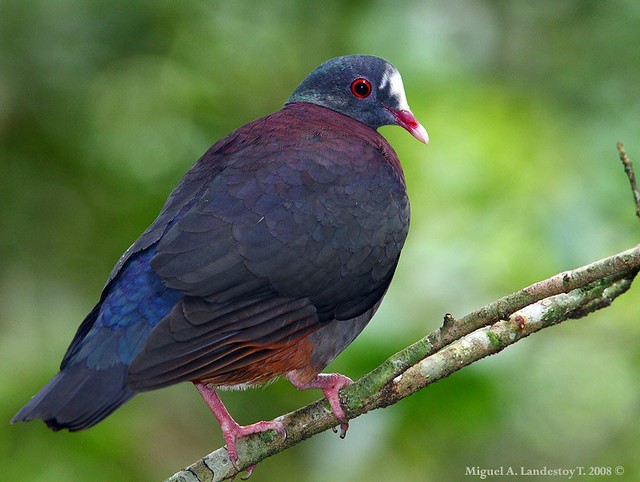
White-fronted Quail-Dove can often be found at first light below Zapotén. © Miguel A. Landestoy T.

Zapotén may be the best place to find Bicknell’s Thrush on its wintering grounds. © Dax M. Román E.
The other two Zapotén specialties are less time-sensitive than the thrush. White-winged Warbler is often found feeding in mixed flocks with its more numerous relative, the Green-tailed Warbler. Western Chat-Tanager moves through the understory in pairs, scolding and feeding, with its size and behavior resembling some of the large furnariids and antshrikes of South America.
Other Hispaniolan specialties often found in the same mixed forest areas include: Hispaniolan Emerald, Hispaniolan Trogon, Narrow-billed Tody, Hispaniolan Parrot, Hispaniolan Elaenia, Rufous-throated Solitaire, Antillean Siskin, Hispaniolan Euphonia, and Hispaniolan Spindalis.
About 1,500 m past the Zapotén ranger station, the road enters the pine forest zone. Bird diversity is lower, but a few species become more likely—in particular, Golden Swallow and Hispaniolan Crossbill.
Past the crest, the road enters another mixed forest zone that visiting birdwatchers do not usually reach, but some who do have reported finding Bay-breasted Cuckoo. Most groups instead search for this species on the way down to Puerto Escondido around La Placa.
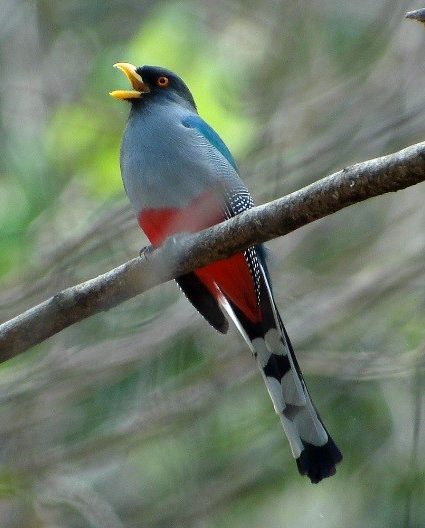
Hispaniolan Trogon can usually be found at Zapotén. © Angie Cedarlund
On the return trip it can be worthwhile to spend some time in the vicinity of El Aguacate. Two species in particular are consistently found there but easily missed elsewhere: Antillean Piculet and Hispaniolan Kingbird.
Services
Accommodations
Those who bring camping gear may be allowed to pitch a tent at El Aguacate or Zapotén—the staff have permitted this in the past. Visitors who are prepared to sleep in their vehicles are unlikely to be disturbed as long as they find an appropriate place off of the roadway to park for the night. Otherwise, the nearest accommodations are in Puerto Escondido and Duvergé.
Most foreign birdwatchers prefer to stay near Puerto Escondido at Villa Barrancolí, owned by Kate Wallace and also known as Kate’s Camp, which has accommodations for 12 guests: six cabins with two beds each. There is a bath house with hot showers and an open dining area, where the manager’s wife will serve lunch or dinner upon request (whereas breakfast is assumed). Kate also owns and operates Tody Tours, facilitating ecotourism throughout the D.R., with a particular focus on endemic birds. In addition to organizing and conducting tours, Kate can connect independent travelers with local guides—a particularly important service for visits to Zapotén. She can be reached at katetody@gmail.com.
Alternative accommodations nearby consist of a hostel in Puerto Escondido (from the park office, turn west off the main road, and the hostel will be the third house on the right) and two hotels in Duvergé: Hotel La Casona (“The Big House”; at the intersection of Route 46 and Avenida N.S. del Carmen) and Hotel Argentina (one block north of the same intersection, beside the church on Calle La Canela).
Food
There are no services beyond Puerto Escondido, and dining options there are scarce. Like most small towns in the D.R., it has a one or two bars that keep cold drinks and snacks on hand.
For anything that resembles a restaurant or grocery store, the nearest establishments are in Duvergé.
Note: Haitian farmers sometimes set up a makeshift market above El Aguacate to sell fruits and vegetables. This practice is intermittent, so it is unwise to rely on it as a source of food.
Notes
When to Visit
As with other forested sites in the D.R., the best time to visit is approximately February through May, when the endemics are most vocal and conspicuous, but Zapotén can be interesting at any time of year.
Hazards & Hassles
The road to Zapotén demands respect, as there are several places where a vehicle could slam awkwardly into large rocks. Driving this road for the first time in the dark is a risky proposition, even under ideal circumstances.
In periods of heavy rain, fresh washouts are common. It is always best to exit the vehicle and study the terrain before attempting to cross. This small investment of time is important insurance against a premature, potentially catastrophic ending to the trip. Those who undertake this expedition should inquire at La Placa and any other opportunities along the way about current road conditions and the locations of any treacherous washouts. Failure to obtain this information is courting disaster.
Haitian migrants use the road to enter the D.R. illegally, but the area does not have a history of robberies, and the military presence at El Aguacate combined with the park rangers and guards likely inhibits most potential criminality that could occur along the road to Zapotén.